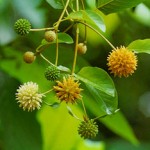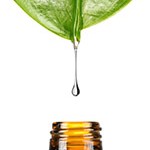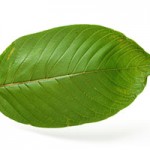by Keith | Jun 9, 2016 | Products
 We pride ourselves on the quality of every one of the products we offer here at ShamansGarden. One of the most popular products we offer is Kratom, and we take our Kratom one step further and higher than the competition: Our Kratom extract is actually made in an FDA-compliant lab.
We pride ourselves on the quality of every one of the products we offer here at ShamansGarden. One of the most popular products we offer is Kratom, and we take our Kratom one step further and higher than the competition: Our Kratom extract is actually made in an FDA-compliant lab.
What does this mean for you?
It means every speck of Kratom extract we offer is truly lab certified. We not only craft every batch of Kratom extract under beyond compliant and strict food-grade conditions, we then test every final product for consistency. Our Kratom extract is never a mystery. Whether it’s our 10x, 15x, 20x, or Maeng da 25x, you know the exact content in every product you purchase.
Our Maeng da 25x has exactly 8% mitragynine content, and boasts a completely organic full spectrum extract. We have independently tested virtually all the KRatom products on the market, and it’s shocking what we’ve found on some of the extracts we tested. Some have high concentrations of lead. Some have remnants of the extraction liquid such as butane and hexane, and worse; benzenes, which are known cancer-causing agents.
This is a complete list of the extracts we offer, and the corresponding mitragynine content:
- Bali 10x = 4% mitragynine content, ethanol and water extracted
- Bali 15x = 5% mitragynine content, ethanol and water extracted
- Bali 20x = 6% mitragynine content, ethanol and water extracted
- Maeng da 25x = 8% mitragynine content, ethanol and water extracted
The lab we use for certifying our Kratom extracts is Wonderland-Labs. They specialize in exotic botanicals, and verify the content of key alkaloids in a number of those exotic botanicals such as Wild Dagga, Morning Glory seeds, Kanna, Kava, Blue Lotus, Blue Lily, Sinicuichi, and many others.
Why does lab certification matter for your Kratom extract?
You might be shocked at the number of products Wonderland-Labs has tested, only to find there are adulterants, fillers, and most shockingly; not a trace of mitragynine.
There are several additional species of Kratom, such as Mitragyna Javanica that don’t contain any mitragynine, but look identical in virtually every way. Especially, once Kratom leaf is crushed or powdered, it becomes nearly impossible to see any difference with the naked eye. So, if you don’t know the company you are purchasing from, and if they seem to have ridiculously low prices on their product, there’s a chance it truly is too good to be true.
When you purchase Kratom extract from us, you know exactly what you’re getting, you know that the product you’re purchasing is manufactured to food-grade standards, and that you’re buying from a company that has been around since the 1990’s. IAmShaman has sent close to 2 million orders and counting, and maintains customer database of several hundred thousand loyal customers. ShamansGarden was an ofshoot of IAmShaman, but’s operated by the same passionate people who started IAmShaman and made it into the juggernaut that it continues to be today.
So, we love Kratom. We love crafting lab certified Kratom extract and offering it to you with the exact same specifications, month after month, year after year. We’re easy to find, and we’re not going anywhere. We pride ourselves not only in the level of service we offer, but in the quality of our products, whether it’s Kratom extract or any of the other 1000+ products we offer through IAmShaman and ShamansGarden.
by Keith | Apr 9, 2015 | Products
 Shaman’s Garden proudly offers Bali kratom leaf in two different forms, both as a powdered and a crushed kratom incense. Our kratom leaf incenses from Bali are plain leaf, without the addition of a kratom extract. You can make an extract from them or use them “as-is” in aromatherapy applications or as an incense. Bali kratom leaf is rising in popularity as the gold standard for kratom incense in Indonesia, where most commercial kratom farms are located.
Shaman’s Garden proudly offers Bali kratom leaf in two different forms, both as a powdered and a crushed kratom incense. Our kratom leaf incenses from Bali are plain leaf, without the addition of a kratom extract. You can make an extract from them or use them “as-is” in aromatherapy applications or as an incense. Bali kratom leaf is rising in popularity as the gold standard for kratom incense in Indonesia, where most commercial kratom farms are located.
Now for the basics: Bali kratom is a strain of Red Vein Kratom with darker reddish leaves. As a Red Vein variety, Bali kratom leaf is generally thought to have a more relaxing aura compared to the more energizing White Vein varieties. Despite the name, these days most Bali kratom is actually grown in Borneo, even though it was probably originally from Bali, a smaller island in the Indonesian archipelago. Why did the name Bali kratom stick?
One reason might be that most of the ports where Bali kratom is exported to the West are still located in Bali. As kratom becomes more internationalized, the names that once associated kratom strains with a specific country of origin, such as Thai Red Vein or Borneo White Vein, have become more fluid; strains that used to be found only in one area are now grown on farms in multiple regions of Southeast Asia, as well as in India and some Western countries. Now origin names for kratom are more likely to refer to the strain’s appearance and chemical properties than any specific region where it was grown.
As for Bali kratom leaf, in the kratom community this variety is thought to be a good starter strain for people who have never worked with kratom before. Although environmental and growing conditions can affect the chemical properties of the leaf, in general kratom from Bali has a well-balanced alkaloid content and tends to be relaxing when used in aromatherapy treatments. A good rule to remember is that Red Vein kratoms are generally thought to be relaxing while White Vein varieties and Maeng Da kratom are more energizing. All in all, Bali kratom leaf offers a pleasant balance and aroma at a quite affordable price.
by Keith | Mar 27, 2015 | Products
 One of the most interesting forms of kratom available from vendors is kratom tincture, also sometimes called liquid kratom. Kratom tincture is made by macerating powdered or crushed kratom leaves in a solvent, typically alcohol, to extract the alkaloids in the herb. The best types of kratom tinctures are usually water-alcohol mixtures, since kratom’s diverse range of alkaloids is soluble in both water and alcohol.
One of the most interesting forms of kratom available from vendors is kratom tincture, also sometimes called liquid kratom. Kratom tincture is made by macerating powdered or crushed kratom leaves in a solvent, typically alcohol, to extract the alkaloids in the herb. The best types of kratom tinctures are usually water-alcohol mixtures, since kratom’s diverse range of alkaloids is soluble in both water and alcohol.
Benefits of Kratom Tincture:
Shaman’s Garden sources our liquid extracts from Herb Spirits. Our liquid herbal extracts come in amber glass bottles ideal for long-term storage, with dropper caps so you can precisely measure the amount of extract you want to work with. One way to use kratom tincture is to spray it onto a neutral base of dried herbs, such as mullein, and let it dry to make an incense blend. Some people prefer kratom tincture because it’s easy to store and has a long shelf life compared to powdered forms of kratom extract. Kratom tincture tends to last longer because the alcohol in the tincture protects the alkaloids from exposure to oxygen, which can degrade mitragynine and other kratom compounds. Our kratom extracts are for external use in aromatherapy purposes and as an incense component only.
How to Make Kratom Tincture:
It’s easier than ever to buy high-quality kratom tinctures from vendors. However, we know some of you like to take the do-it-yourself route, especially if you want to stretch your kratom and your dollars! Although making kratom tincture is a little more involved and requires a few more tools than making kratom resin, the final product is a compact and long-lasting form of kratom that is surprisingly versatile. Read on to find out how to make kratom tincture at home.
You Will Need:
-Plain powdered or crushed kratom leaf (not an extract!)
-40% ethyl alcohol. For those concerned about being exposed to alcohol, food-grade glycerin may be used instead. You can buy glycerin at most pharmacies.
-Measuring cups
-Digital scale
-Extraction bottle. These glass or plastic bottles are chemically resistant and won’t crack or leak chemicals into your finished tincture.
-Amber or blue glass bottle with dropper
-Strainer
-Funnel for pouring
Optional but Useful:
-Glycerin. This stabilizes the alcohol-based tincture and prevents evaporation. It’s also possible to make a non-alcoholic glycerin-based tincture (see above).
-Citric acid. The acidity facilitates extraction and converts the alkaloids in kratom from freebases to alkaloid salts. Both forms are present in the kratom leaf, but salts tend to be more stable.
Procedure:
Using your digital scale, measure your kratom precisely. A suggested ratio is 7 ounces of plain dried kratom leaf to 1 liter of alcohol. Combine your weighed kratom and alcohol in a chemically resistant bottle. Add the citric acid if you’re using it. Now you can either store the mixture in the fridge for about a week or take an extra step called a warm water bath to speed up the extraction process. Simmer water in a pot, then take it off the heat and carefully insert your extraction bottle. Leave the bottle for 30 minutes, then replace the water with more warm water and repeat.
After a few days to a week, pour your tincture into a dish through a strainer or sieve to remove the kratom plant material. Cover the dish with tin foil and let the alcohol evaporate until the tincture’s volume has decreased by about half. Using a measuring cup, measure the final volume of your kratom tincture. Divide this by the initial weight of kratom you used to estimate the finished tincture’s concentration. For instance, if you used 200 grams of dried kratom and ended up with 10 tablespoons of tincture, then the concentration is 20:1 (200/10 = 20). Tag your tincture with the variety and origin of kratom you used, the date, and the concentration. Your kratom tincture will typically keep for up to one year when stored away from sunlight in a cool, dry place.
by Keith | Mar 19, 2015 | Products
 If you’ve ever perused our extensive selection of kratom products, you may have seen that we offer several varieties of kratom crushed leaf. If you’ve never seen this before on other websites, you may be wondering what exactly is kratom crushed leaf? And why would you buy it instead of a powder or other form of kratom? This little article is intended to give you a bit more information about crushed kratom leaf so you can decide on the product that suits your needs.
If you’ve ever perused our extensive selection of kratom products, you may have seen that we offer several varieties of kratom crushed leaf. If you’ve never seen this before on other websites, you may be wondering what exactly is kratom crushed leaf? And why would you buy it instead of a powder or other form of kratom? This little article is intended to give you a bit more information about crushed kratom leaf so you can decide on the product that suits your needs.
Basically, our kratom crushed leaf is made from coarsely ground kratom leaves. Also sometimes called “tea-cut” for its texture, which is reminiscent of loose-leaf tea, the crushed kratom leaf incense is one of several products we like to offer our customers, along with kratom powders, resins, and liquid extracts. However, our crushed kratom leaf products are not extracts—they are simply the unenhanced kratom leaf, conveniently crushed to make it easier to work with. You can buy any of the types of kratom we offer, from Thai Red Vein to Maeng Da, in either powdered or crushed leaf form.
Why Buy Crushed Kratom Leaf?
Whether you buy kratom as a whole leaf, powder, or crushed leaf is largely a matter of preference. Here are a couple reasons why someone might prefer the kratom crushed leaf to the powdered variety:
Price: Because crushed kratom leaves are less finely processed than kratom powder, they are correspondingly cheaper. Part of what you’re paying for with kratom powder is the extra processing by the manufacturer. If you’re willing to put the time in, you can take this extra step yourself and grind the coarse, “tea-cut” crushed kratom into a powder. There are a few different ways to do this: you can simply crush the leaves by hand or rub the coarse powder through a sieve, using a sheet of paper to collect the resulting powder. You can also grind the leaf pieces in a pepper mill or coffee grinder—just make sure your appliance is new or VERY clean to avoid contaminating residue. You’ll also want to clean the appliance thoroughly afterward.
Freshness: Crushed kratom leaves also present a smaller surface area to the air than the more finely micronized kratom powder. If you can get them, whole kratom leaves present an even smaller surface area. This can be important, especially if you think you might have to store your kratom for a while, because the alkaloid content in kratom will decrease over time as it’s exposed to oxygen. The less surface area exposed to air = the less area left for alkaloids to escape. Storing your kratom, in whatever form, away from exposure to sunlight, moisture, and oxygen will also help your kratom product last longer and stay fresher.
Ultimately though, buying kratom crushed leaf or kratom powder is largely a matter of preference, as these two forms of kratom will contain the same range of alkaloids. If you prefer a finer texture for an incense preparation, then powdered kratom is the way to go. But if you don’t mind putting in some extra effort and can spare the time to process your kratom—for instance, if you want to make your own kratom resin at home—then crushed kratom leaf is a very versatile and effective option.
by Keith | Mar 18, 2015 | Articles
 One of the most popular strains of kratom in cultivation, Rifat Kratom is a type of Thai Red Vein kratom originally bred by cloning wild trees. In fact, Rifat Kratom is one of the most highly prized of the cultivated varieties due to its high mitragynine content. We sell both the Rifat and Bumblebee Red Vein Kratom varieties as rooted cuttings for the aspiring exotic gardener. Many people find these particular strains to be the easiest and hardiest-growing types of kratom as well.
One of the most popular strains of kratom in cultivation, Rifat Kratom is a type of Thai Red Vein kratom originally bred by cloning wild trees. In fact, Rifat Kratom is one of the most highly prized of the cultivated varieties due to its high mitragynine content. We sell both the Rifat and Bumblebee Red Vein Kratom varieties as rooted cuttings for the aspiring exotic gardener. Many people find these particular strains to be the easiest and hardiest-growing types of kratom as well.
What does it mean when we say Rifat Kratom is a type of Red Vein? Kratom varieties come in several strains which are described by the color of the leaves’ central veins. Kratom leaves have central veins that can be green, white, or red to reddish purple. The different colors are thought to indicate a specific makeup of kratom’s major alkaloids—mitragynine, 7-hydroxymitragynine, and so on. Strains are further distinguished by origin: so you have Thai Red Vein, Malaysian Green Vein, Borneo White Vein, etc. Red Vein varieties are generally thought to have an alkaloid makeup that is more relaxing, while White Vein varieties are classed as energizing and Green Vein varieties are somewhere in between.
Rifat Kratom is a type of Thai Red Vein produced by cloning. It is named after Claude Rifat (Ree-FAH), a Swiss botanist who was the first to grow Rifat Kratom from seed as part of his research in Thailand. The parent plant is rumored to be the same one growing at Chulalongkorn University in Thailand whose leaves have been used in numerous research studies by Chiba University in Japan. Chiba University scientist Hitomitsu Takayama was among the first researchers to synthesize mitragynine in 1995.
As might be expected from the “Red Vein” label, mature Rifat Kratom plants have leaves with red or reddish purple central and lateral veins (veins running from the central stem down the leaf). However, if you get a plant labeled Rifat Kratom whose veins appear to be white or green as it’s maturing, don’t jump to the conclusion you’ve been ripped off! Factors in the growing environment can definitely affect the color of kratom’s leaves. Also, when kratom plants are reaching maturity, the levels of alkaloids and other chemicals in the leaf are changing. This means that the leaf color may change quite a bit before the kratom has fully matured. Frequently, Red Vein varieties have green or white veins when young, only deepening to red or purple at maturity.
If you’re thinking of purchasing a young kratom cutting or kratom seeds to grow yourself, we recommend getting a Rifat Kratom if you can. This hardy, fast-growing kratom variety has remained the most popular strain of kratom in private non-commercial cultivation, not only because of its mitragynine content, but also because it’s widely regarded to be easier to grow than other strains of kratom. This might be in part because Rifat Kratom is a clone: the Rifat strain was specially bred from wild kratom trees to select for genetic traits that made it more likely to thrive in cultivation. These traits combine to make Rifat Kratom a fairly forgiving and rewarding strain of kratom to try growing on your own, even for first-time kratom growers!
 We pride ourselves on the quality of every one of the products we offer here at ShamansGarden. One of the most popular products we offer is Kratom, and we take our Kratom one step further and higher than the competition: Our Kratom extract is actually made in an FDA-compliant lab.
We pride ourselves on the quality of every one of the products we offer here at ShamansGarden. One of the most popular products we offer is Kratom, and we take our Kratom one step further and higher than the competition: Our Kratom extract is actually made in an FDA-compliant lab.




Recent Comments